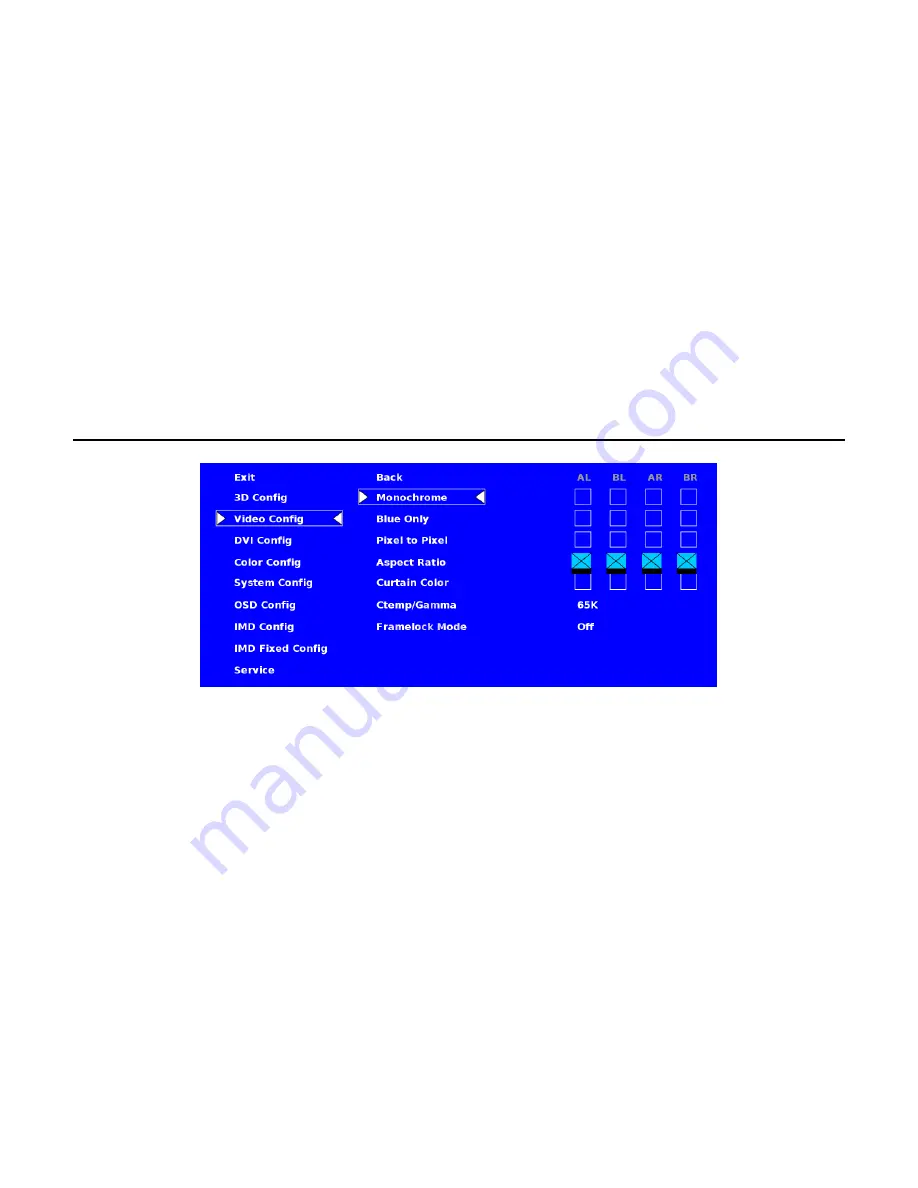
14
■
Channel A/B Input Format
Used to determine the type of signals applied to the inputs.
Normal
– Select this when connected to a dual-stream HDSDI Stereoscopic source. (Separate Left and Right
on two BNC/Coax Cables) – Usually from a 3D Camera Rig, or 3D Editor.
Side-By-Side*
– Used when Stereoscopic source is formatted Side-by-Side on one BNC/Coax Cable. Usually
from a 3D Processor used for transmission or distribution.
*Note* To use this feature, the same side-by-side signal must be connected to the Left and Right inputs.
(Simply connect a short BNC Coax cable from Left-Out to Right-In)
■
Output Swap
This changes the Left-Right polarity of the screen when using 3D glasses. This might be necessary when
viewing the monitor at extreme high or low viewing angles. Also can be used when Left/Right images are
reversed and it’s not convenient to reach the input connections.
Video Configuration Submenu
■
Monochrome Mode
Use this setting to enable monochrome mode. Only the luminance of the image will be displayed as a grayscale
picture.
■
Blue-Only Mode
Use this setting to enable Blue-Only mode. This mode displays only the blue color component of the image,
switching off the red and green components. Use this mode when calibrating the monitor to SMPTE color bars
with the following procedure:
1.
Allow the monitor to warm up for at least 5-10 minutes.
2.
Display SMPTE split-field color bars on the monitor using an external source.
3.
Enable
Monochrome mode
.
4.
Locate the pluge pattern (super black, black, and gray bars) at the lower-right corner of the screen. Adjust the
Brightness
knob until
there is no visible difference between the super black and black bars, but the gray bar is still visible.
5.
Adjust the
Contrast
knob until an even grayscale appears along the top bars.
6.
Disable
Monochrome mode
.
7.
Enable
Blue-Only mode
and adjust the
Color
knob so that the outermost bars (white and blue) appear to match in brightness.
Video Configuration Submenu




























